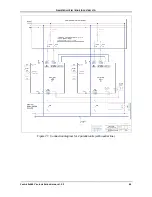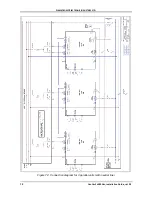
G
AMATRONIC
E
LECTRONIC
I
NDUSTRIES
L
TD
.
Centric 3x480 Vac, Installation Guide, rel. 2.2
63
9. Parallel operation
9.1
Theory
When two or more Centric units are deployed in parallel, they are connected according to the decentralized
static switch method (see below). Special technical solutions and control algorithms are implemented to
synchronize all units in the system to prevent circulation of energy between them and to isolate a faulty unit
from the common power bus. In addition, an active current sharing circuit regulates the output voltage of
each UPS to provide optimal load sharing between the units.
One of the parallel UPS systems assumes the role of “Master”. This unit is synchronized to the mains
power. The other units operate as “Slaves” and are synchronized to the Master. (The function of Master is
assumed by the first system to be switched on during the parallel start-up process. This is transparent to
the system operator.)
9.1.1
Decentralized static switch method
Every Centric UPS is equipped with a static switch to ensure that the UPS will continue to supply power to
the load (from the mains or from a secondary ac input source) in the event of a problem with the inverter or
an overload of the UPS. Thus, the static switch performs a very important function.
Figure 64: The static switch in context (stand-alone system)
However, when two or more UPSs are configured in parallel mode, the static switch presents a potential
problem in that, were one UPS to fail, its static switch would automatically be triggered to go to bypass
mode, to supply the load directly from the mains. This would connect the inverters of the other UPSs
directly to the mains (through the output bus), which could potentially damage them.
To avoid such a hazard in decentralized mode, the static switches are synchronized by dedicated control
communication to ensure that if one unit goes to bypass mode, the rest of the units will also transfer to
bypass mode simultaneously.
















































